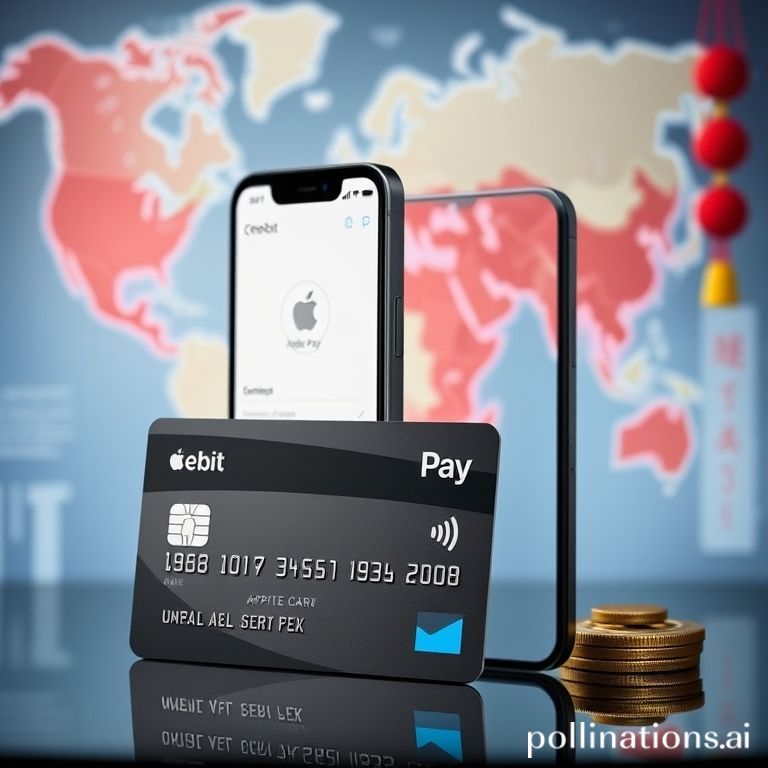
World Liberty Financial (WLFI) is poised to significantly expand its footprint in the digital payments landscape with the imminent launch of a branded debit card. This new financial product will offer users the convenience of linking their WLFI accounts directly to Apple Pay, enabling seamless transactions using its USD1 stablecoin. The strategic announcement was made by WLFI co-founder Zak Folkman during Korea Blockchain Week, signaling the project's ambitious push into the burgeoning Asian market. The debit card and a complementary retail application are expected to roll out within weeks, marking a pivotal moment in WLFI's evolution towards mainstream adoption.
The Debit Card and App: Bridging Stablecoins with Everyday Payments
At the core of WLFI's latest initiative is a clear objective: to integrate its USD1 stablecoin into the fabric of daily financial activities. The forthcoming debit card will empower holders to attach their USD1 balances to Apple Pay, facilitating contactless mobile payments at a vast network of merchants globally. This integration promises to dramatically enhance the utility and accessibility of the USD1 stablecoin, moving it beyond traditional cryptocurrency exchanges and into the hands of everyday consumers for routine purchases.
Accompanying the debit card is a new retail application designed to offer a comprehensive and user-friendly experience. WLFI envisions this app combining robust peer-to-peer payment functionalities with intuitive trading tools, creating a familiar and appealing interface for users. The development team has drawn parallels between their app's design and popular retail fintech platforms, aiming to replicate their success in simplifying complex financial interactions. The overarching goal of these new products is to significantly boost the everyday usage of the USD1 stablecoin, making it a viable and preferred option for digital transactions.
Strategic Partnerships Pave the Way for Asia Expansion
WLFI's expansion strategy includes forging crucial alliances, particularly in the dynamic Asian market. A significant step in this direction is the signing of a memorandum of understanding with Bithumb, a prominent cryptocurrency exchange based in South Korea. This partnership is designed to explore collaborative ventures and broaden the distribution channels for WLFI's offerings across the region. Tapping into a major local exchange like Bithumb could provide WLFI with unparalleled leverage, accelerating its outreach in South Korea and surrounding markets, where mobile payment solutions are already deeply embedded in consumer behavior.
This strategic pivot also reflects a broader shift in WLFI's technological approach. The company is reportedly moving away from its initial plans to develop its own blockchain infrastructure, opting instead for a technology-agnostic stance. This flexibility could allow WLFI to integrate more easily with existing and future payment ecosystems, reducing development complexities and potentially speeding up market entry in diverse regions.
Understanding WLFI's Tokenomics and Governance
The total token structure of WLFI has garnered attention, with market data and detailed reports shedding light on its distribution. Insights reveal approximately 27 billion tokens in circulation against an initial total supply of 100 billion. This allocation strategy delineates portions for the company's operational needs, strategic partners, liquidity pools, and public sale participants. Such figures are crucial for stakeholders and market observers who assess the project's transparency and long-term viability.
Moreover, the project emphasizes a degree of community governance. Token holders previously participated in a vote regarding the tradability of the WLFI token, with an overwhelming 99.94% in favor. This near-unanimous decision underscores the community's engagement and plays a vital role in shaping market perception and reinforcing the project's credibility within the broader cryptocurrency ecosystem.
Market Response and Price Dynamics
Following the announcement of these new payment initiatives, the WLFI token experienced a mixed reaction in the market. Price trackers and industry analyses indicated an approximate 10% decline in the token's value. This downturn occurred amidst broader market pressures that affected numerous cryptocurrencies, suggesting that the token's performance might have been influenced by wider market sentiments rather than solely the product announcement itself. Traders and investors are now closely monitoring whether the introduction of the debit card and retail app will help stabilize demand for the WLFI token or if it will contribute to short-term selling pressures. The coming weeks will be critical in observing the interplay between product utility and market valuation.
Navigating Regulatory and Operational Hurdles
The ambitious endeavor of linking a stablecoin to established mainstream payment networks like Apple Pay inherently brings forth a series of complex regulatory and operational questions. Industry reports caution that WLFI must diligently address several critical components before achieving a broad and unhindered rollout. These include securing necessary approvals for Apple Pay integration, obtaining clearances from relevant card network authorities, ensuring transparent reserve management for the USD1 stablecoin, and implementing robust anti-money laundering (AML) checks.
Any incomplete steps in these areas could lead to significant delays in product deployment or impose geographical restrictions on its availability. The successful navigation of these regulatory and operational landscapes will be paramount for WLFI to realize its vision of mainstream stablecoin adoption, underscoring the delicate balance between innovation and compliance in the rapidly evolving fintech sector.
